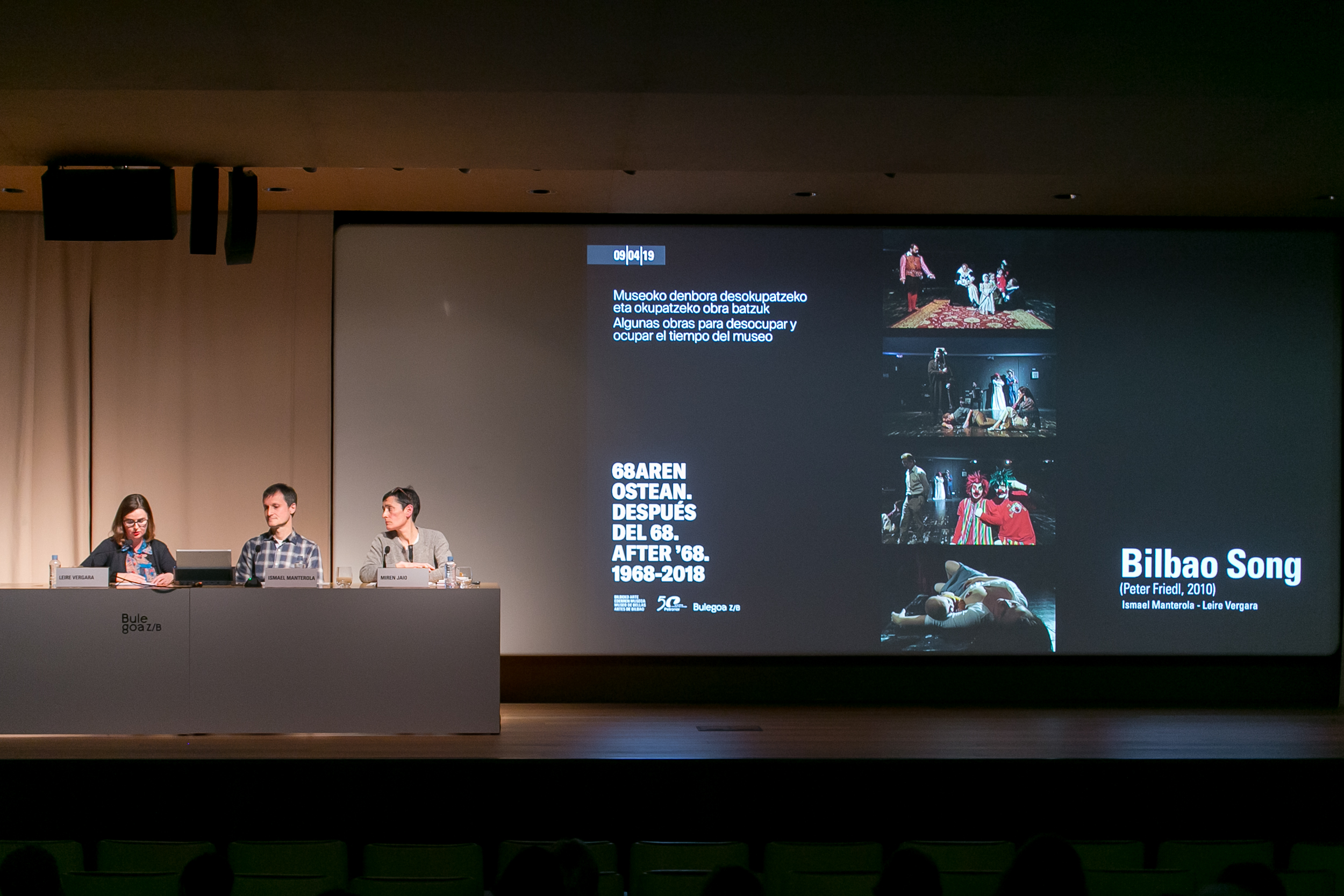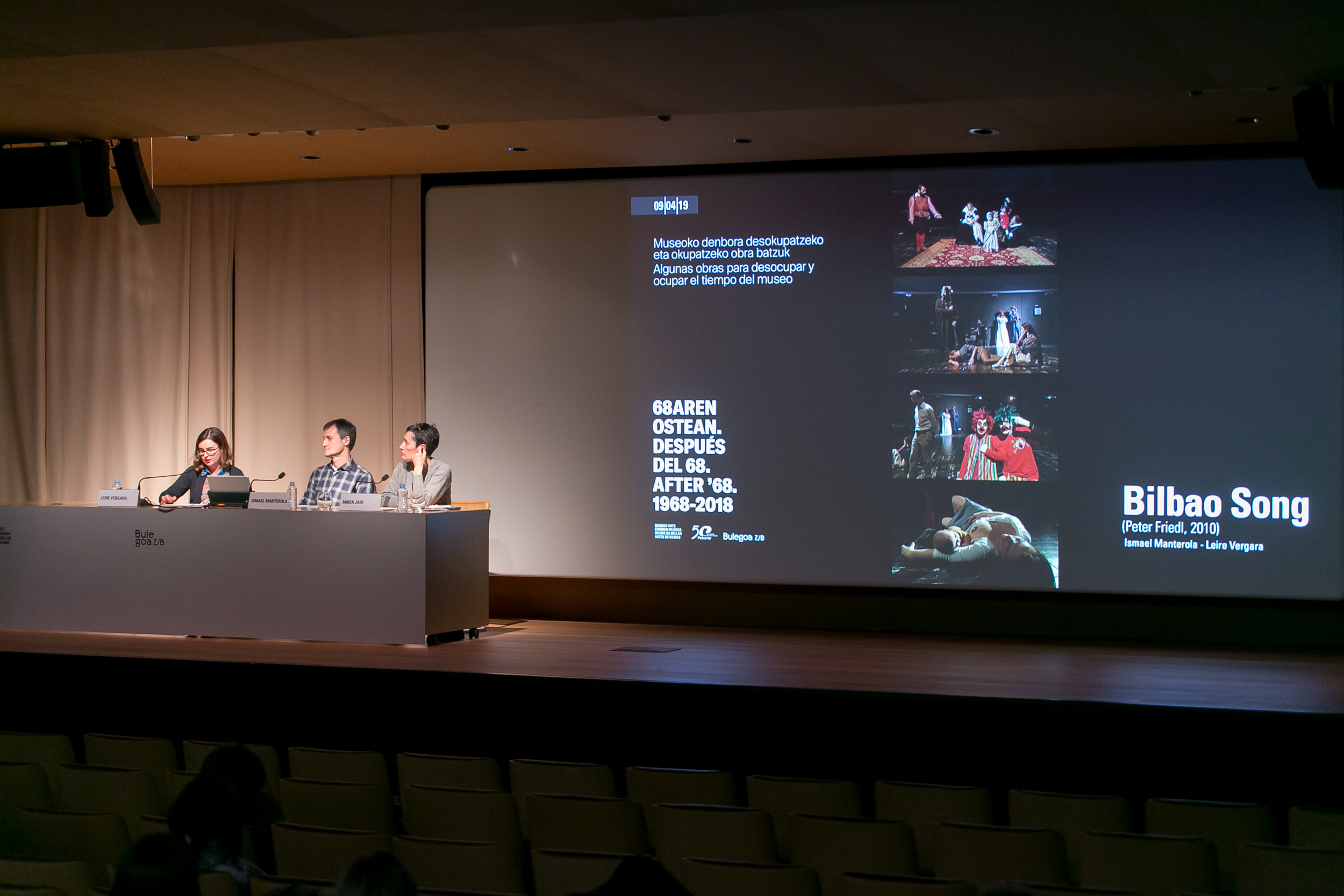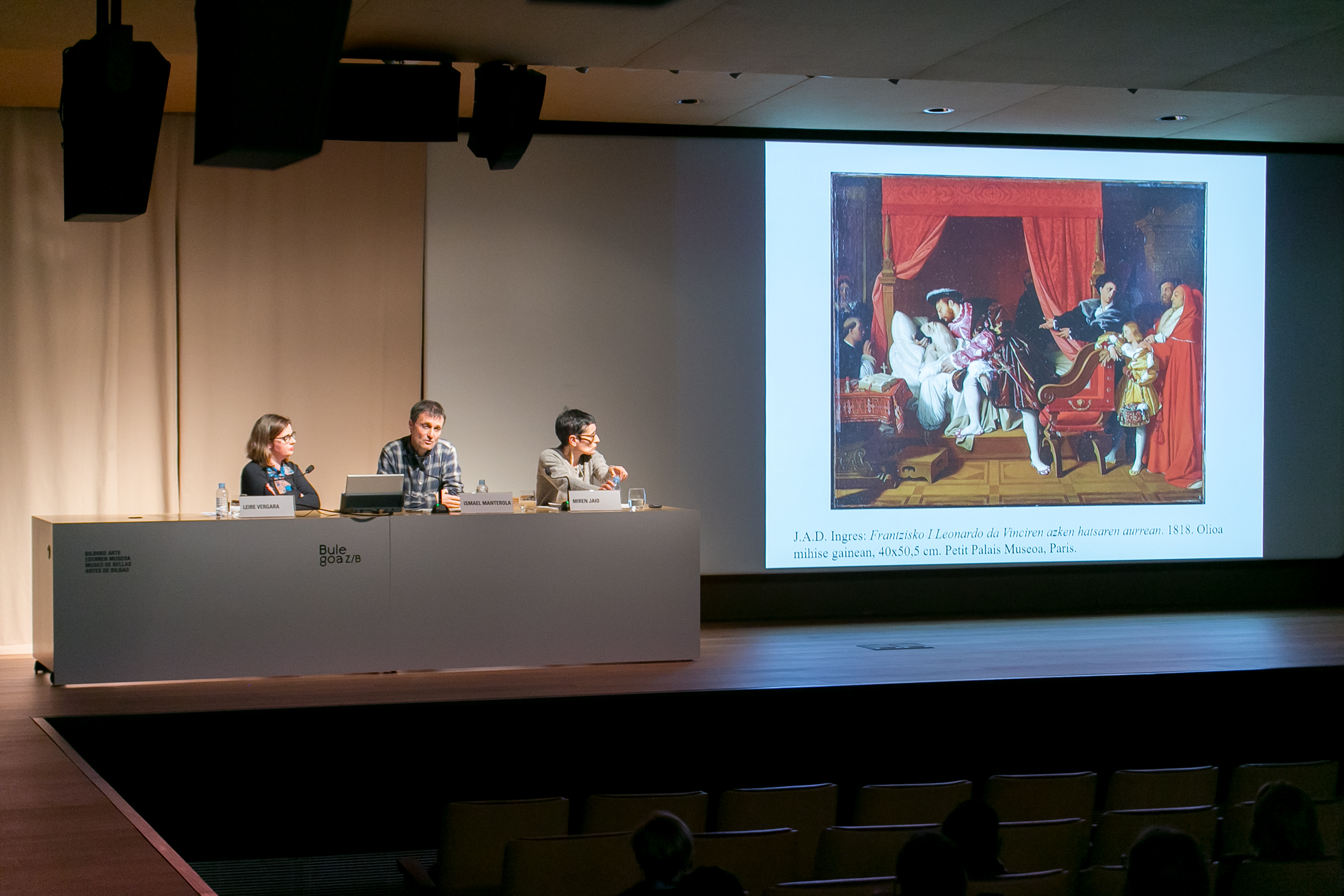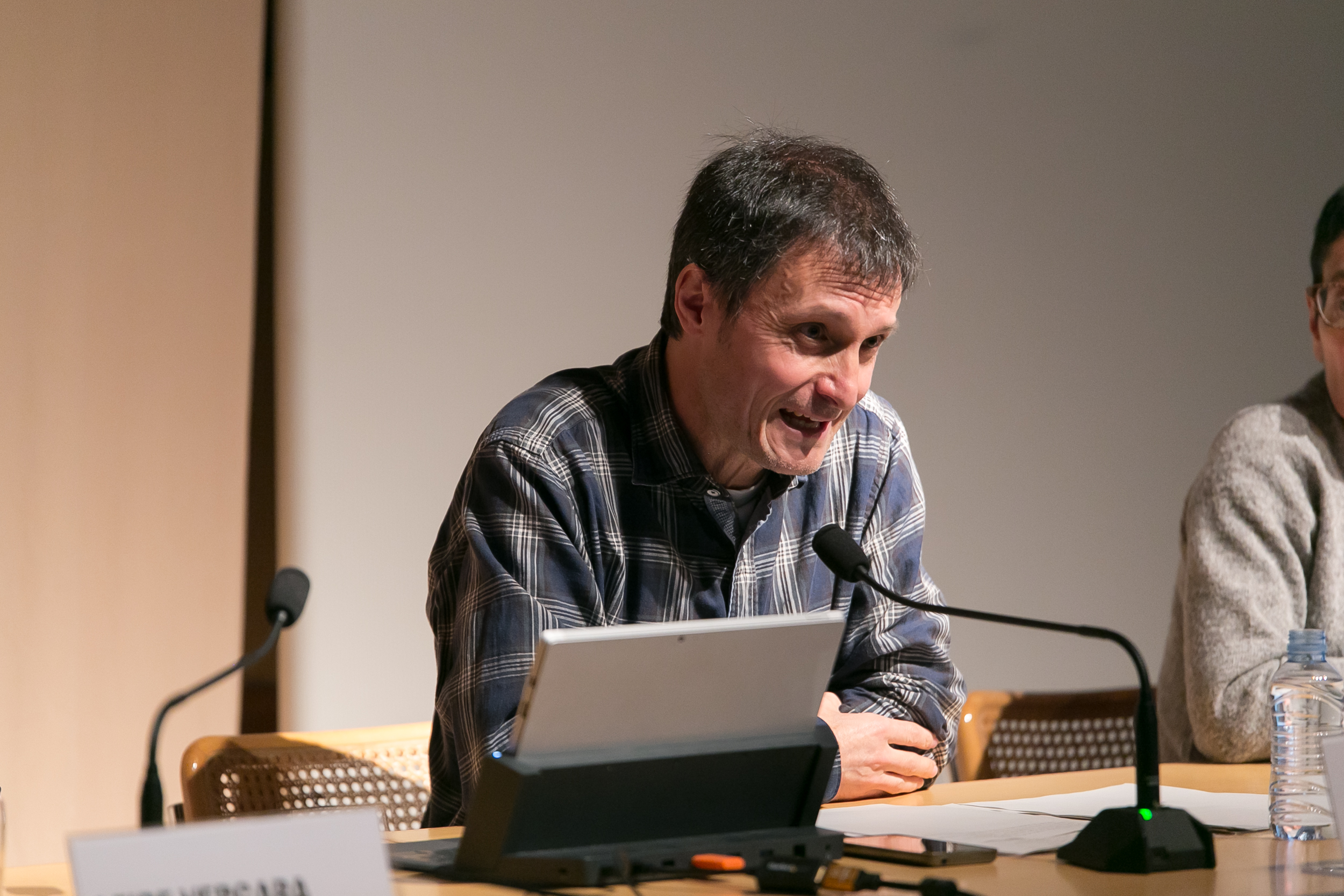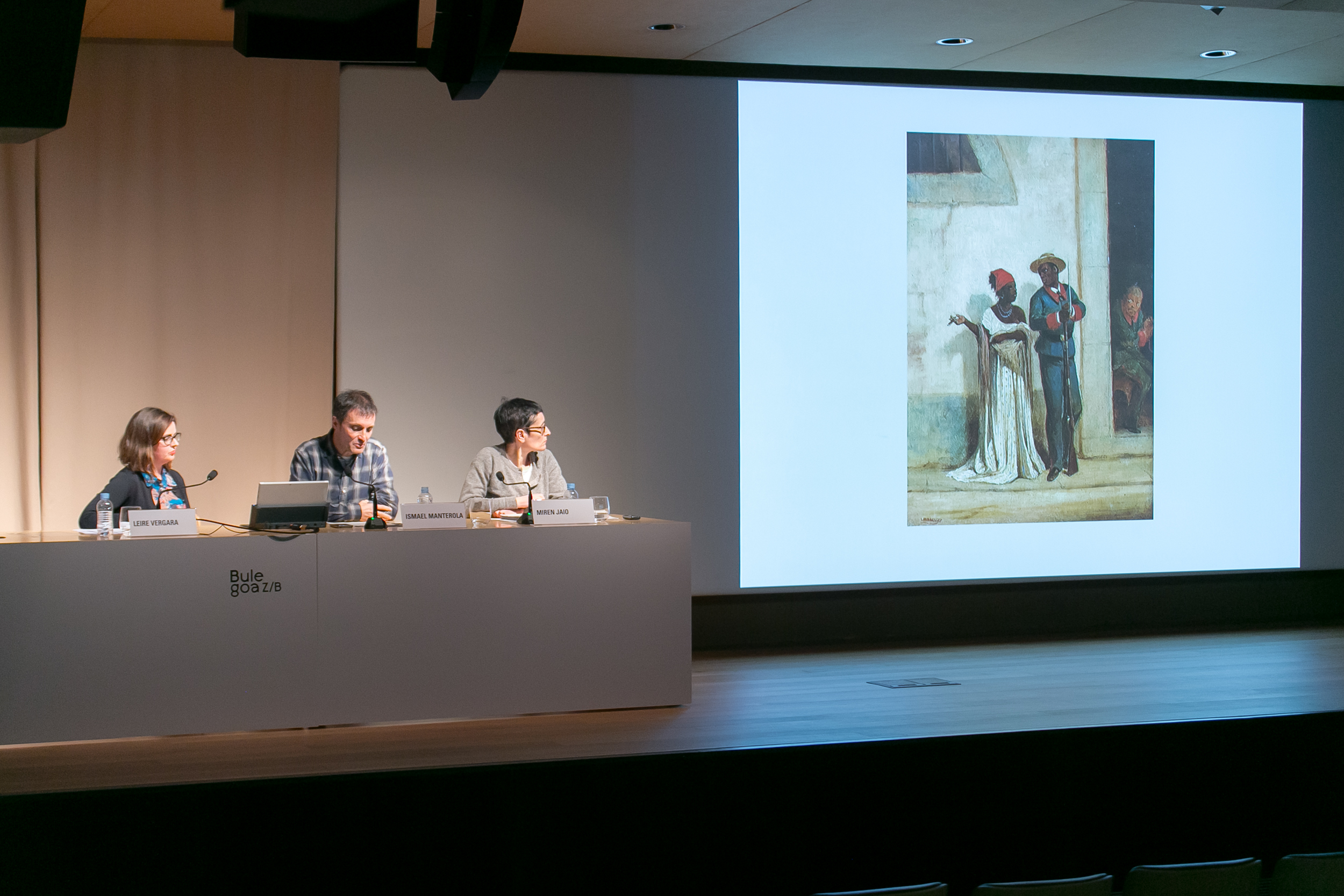Artworks for de-occupying
BILBAO SONG. WITH ISMAEL MANTEROLA AND LEIRE VERGARA
by
Encounter around Bilbao Song (Peter Friedl, 2010) with Ismael Manterola and Leire Vergara. This event is part of Artworks for De-occupying and Occupying Time in the Museum, a series of encounters accompanying the exhibition After 1968. Art and artistic practices in the Basque Country, 1968-2018 at the Bilbao Fine Arts Museum. The encounters are based on seven works, some of which are included in the exhibition while others are part of its conceptual framework. In each encounter, artists and art specialists gather together around an artwork.
The encounters in Artworks for… coalesce around the idea of how to imagine the museum through the objects it holds – the particular museum hosting After 1968, with its specific nature and history; and the museum in general, as an institution that creates a narrative of the present by storing objects from the past for the future.
Venue: Auditorium, Bilbao Fine Arts Museum.
Time: 7 pm.
Language: Basque (with simultaneous interpretation into Spanish).
Entry free of charge, limited seating. Invitations available at the museum ticket office from the Monday before each session.
About the artwork
A six-minute tracking shot along a mise en scène of a number of paintings. Some of these are from the Basque painting school from the first thirty years of the twentieth century: El paria castellano (The Castillian Pariah, 1917) by Juan de Echevarría, El orden (Order, 1918-1919) by Gustavo de Maeztu – both in the Bilbao Fine Arts Museum collection –, and Aurelio Arteta’s Tríptico de la guerra (War Triptych, 1937) by. The other paintings relate in some way to the common theme of Basqueness, whether because of the topic they portray, such as Jean-Auguste-Dominique Ingres’ Enrique IV recibiendo al embajador español (Henry IV Receiving the Spanish Ambassador, 1817), the artist who made them, as in Soldado y mulata (Soldier and Mulatta), by Víctor Patricio Landaluze, a painter and illustrator from Bilbao who emigrated to Cuba in 1850. Among the tableaux vivants are certain well-known local figures – Julen Madariaga and the clowns Pirritx eta Porrotx, appearing as themselves. In the background, a piano and accordion play Kurt Weil’s composition for Bertolt Brecht’s musical Happy End.
The visual and audio references in Peter Friedl’s film inevitably refer us to the museum as a container that produces a canonic narrative by the superimposition and stoppage of images of different spaces and times in a continuous whole. Here, however, the artist uses procedures such as the mise en scène, montage, and the tracking shot to highlight the discontinuities and fractures in any constructed narrative. Friedl’s oeuvre as a whole attempts to renew readings of local narratives embedded in the general framework of modernity, and to do this through the inherent potential of images to renew themselves (all images are both anachronistic and contemporary). Bilbao Song was screened from March-June 2010 at the sala rekalde, Bilbao, shortly before ETA declared a ceasefire in September the same year.
Ismael Manterola Ispizua (Zumaia, 1966). Studied History of Art, Universidad de Valencia: PhD in History of Art, Universidad del País Vasco EHU/UPV. Currently working as professor of History of Art, UPV/EHU. Has written as an art critic for Egunkaria and Berria and Mugalari, the Gara newspaper supplement. Curator of Gure Artea 2006 (2006) and Bilbea eta Hari askeak: euskal artearen bi bildumen arteko elkarrizketa (2014). Published writings include: Raemaekersen Marrazkiak: Britainiar propaganda Espainian eta Euskal Herrian Lehen Mundu Gerran (Servicio de Publicaciones de la UPV/EHU, 2012), the chapter “Compromiso o especificidad del medio. Arte en el País Vasco en las últimas décadas del siglo XX”, Autonomía e ideología (La casa de la riqueza, 2016), Maite ditut Maite. Transmisioa XX. mendeko Euskal Herriko artean (Edo, 2017).
Leire Vergara. Independent curator and member of Bulegoa z/b who has curated many different exhibitions including Las imágenes recurrentes. Sobre las condiciones materiales de su retorno (with Pablo Martínez), MACBA, Barcelona (2017), La pantalla negra o blanca: el poder de ver imágenes juntos XXIII Jornadas de la Imagen CA2M, Madrid (2016); Jose Mari Zabala Écfrasis. Bideolanak 1986-2016, CarrerasMugica, Bilbao (2016); Dispositivos del tocar: Imaginación curatorial en los tiempos de las fronteras expandidas, Trankat, Tetuan (2015). From 2005-2009 she worked as head curator for Sala Rekalde, where she curated solo exhibitions by Can Altay, Phil Collins, Itziar Okariz, Erlea Maneros Zabala, Iñaki Imaz, Haegue Yang, Sean Snyder and Peter Friedl, among others. From 2002-2005 she was co-director of DAE- Donostiako Arte Ekinbideak ( Peio Aguirre), a project associated with Arteleku which produced works by artists such as Susan Philipsz, Phil Collins and Jakob Kolding. In 2017 she finished her thesis on Dispositifs of Touching: A Curatorial Study on The Plazas of Sovereignty at the Visual Cultures Department (Curatorial/Knowledge), Goldsmiths College, University of London. She is currently a member of the Eremuak Temporary Technical Commission, Basque Government, and teaches the course Curating Positions: Logics of Montage: Between the Cinematic Apparatus and the Exhibition (with Marwa Arsanios and Leon Filter) for the Masters in Art, Dutch Art Institute, Arnhem.
Artworks for De-occupying and Occupying Time in the Museum is a collaborative project between Bulegoa z/b and the Bilbao Fine Arts Museum.



